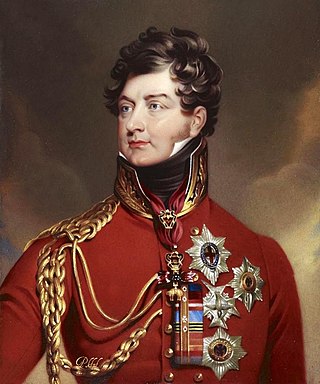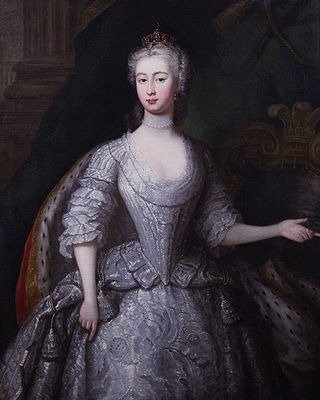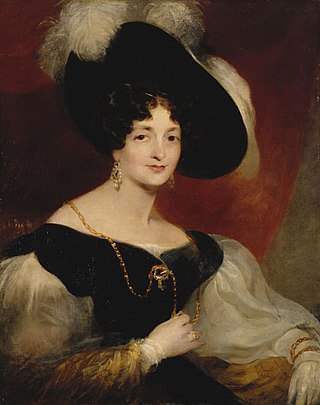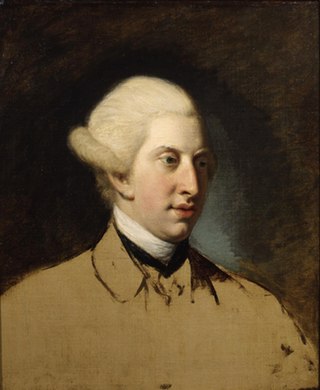
Cranbourne Lodge was a keeper's lodge for the royal hunting grounds of Cranbourne Chase, once adjoining but now part of Windsor Great Park in the English county of Berkshire. All that remains of it today is the Grade II* listed [1] Cranbourne Tower.

Cranbourne Lodge was a keeper's lodge for the royal hunting grounds of Cranbourne Chase, once adjoining but now part of Windsor Great Park in the English county of Berkshire. All that remains of it today is the Grade II* listed [1] Cranbourne Tower.

The house's origins date from when the royal forest of Windsor was divided up in the 13th century. [2] A substantial house was certainly built there in the reign of King Henry VII. [2] During the reign of his son, Henry VIII, it was the residence of his favourite, Richard Weston. [2] Anne Hyde was born there in 1638. [2] The building was rebuilt and expanded several times in its history, notably by Sir George Carteret, who was visited there by Samuel Pepys. [2] The largest house on the site, including the surviving tower, was erected in 1808. [2]
In 1814, the young Princess Charlotte, daughter of the Prince Regent (later George IV), was made a virtual prisoner at the Lodge. [2] [3] George and her mother, Caroline of Brunswick, had long been estranged and his relationship with their daughter was little better. As was not unusual at the time, his solution was to marry off this problematic daughter as soon as possible. An engagement with William II of the Netherlands was made in 1814, but this was soon broken off. Charlotte became infatuated with the minor prince Augustus of Prussia, despite his being seen as below the station of a likely future Queen of the United Kingdom. The fact he was already married would have been its own hindrance too. In July 1814, George dismissed her loyal servants, expelled her from her previous home at Warwick House, and forced her to move to Cranbourne, with a staff of his choice.
The Prince Regent had been increasingly unpopular with the people, whilst Charlotte and her Whig sympathies were seen as populist reformers. Her incarceration was also unpopular, drawing attention from the Romantic poets Byron and Shelley. [3]
Charlotte also attracted the attention of Prince Leopold of Saxe-Coburg-Saalfeld. After gaining the Prince's permission to court her at Cranbourne, Charlotte was released from her house arrest in January 1816 and they were married at Carlton House in May. The marriage was a tragic one though, and little over a year later, Charlotte died in childbirth. [3] As the only surviving legitimate grandchild of George III, and thus the only clear royal heir, this dynastic crisis led to "a mad dash towards matrimony by most of her bachelor uncles", [3] a race to provide a further heir that in turn led to Queen Victoria.
Today only the Cranbourne Tower remains, as a private residence. The main house fell into disrepair during the 19th century, particularly the main roof. It was demolished in 1865, [2] although this tower was spared as a somewhat independent structure.

A prince regent or princess regent is a prince or princess who, due to their position in the line of succession, rules a monarchy as regent in the stead of a monarch regnant, e.g., as a result of the sovereign's incapacity or absence.

Augusta of Saxe-Gotha-Altenburg was Princess of Wales by marriage to Frederick, Prince of Wales, eldest son and heir apparent of King George II. She never became queen consort, as Frederick predeceased his father in 1751. Augusta's eldest son succeeded her father-in-law as George III in 1760. After her spouse died, Augusta was presumptive regent of Great Britain in the event of a regency until her son reached majority in 1756.

Princess Charlotte Augusta of Wales was the only child of George, Prince of Wales, and his wife, Caroline of Brunswick. She was expected to ascend the British throne after the deaths of her grandfather, George III, and her father, but died in childbirth at the age of 21, predeceasing them both.

Prince Edward, Duke of Kent and Strathearn, was the fourth son and fifth child of King George III. His only child became Queen Victoria.

Charlotte of Mecklenburg-Strelitz was Queen of Great Britain and of Ireland as the wife of King George III from their marriage on 8 September 1761 until the union of the two kingdoms on 1 January 1801, after which she was Queen of the United Kingdom of Great Britain and Ireland until her death in 1818. As George's wife, she was also Electress of Hanover until becoming Queen of Hanover on 12 October 1814, when the electorate became a kingdom. Charlotte was Britain's longest-serving queen consort.

Charlotte, Princess Royal, was Queen of Württemberg as the wife of King Frederick I. She was the eldest daughter and fourth child of King George III of the United Kingdom and his wife, Charlotte of Mecklenburg-Strelitz.

Frogmore is an estate within the Home Park, adjoining Windsor Castle, in Berkshire, England. It comprises 33 acres (130,000 m2), of primarily private gardens managed by the Crown Estate. It is the location of Frogmore House, a royal retreat, and Frogmore Cottage. The name derives from the preponderance of frogs which have always lived in this low-lying and marshy area near the River Thames. This area is part of the local flood plain.

Princess Victoria of Saxe-Coburg-Saalfeld, later Princess of Leiningen and subsequently Duchess of Kent and Strathearn, was a German princess and the mother of Queen Victoria of the United Kingdom. As the widow of Charles, Prince of Leiningen (1763–1814), from 1814, she served as regent of the Principality during the minority of her son from her first marriage, Carl, until her second wedding in 1818 to Prince Edward, fourth son of King George III.

Prince William Henry, Duke of Gloucester and Edinburgh,, was a grandson of King George II and a younger brother of George III of the United Kingdom.

Princess Sophia of Gloucester was a great-granddaughter of King George II of Great Britain and niece of King George III.
The Regency Acts are Acts of the Parliament of the United Kingdom passed at various times, to provide a regent in the event of the reigning monarch being incapacitated or a minor. Prior to 1937, Regency Acts were passed only when necessary to deal with a specific situation. In 1937, the Regency Act 1937 made general provision for a regent, and established the office of Counsellor of State, a number of whom would act on the monarch's behalf when the monarch was temporarily absent from the realm or experiencing an illness that did not amount to legal incapacity. This Act, as modified by the Regency Acts of 1943 and 1953, forms the main law relating to regency in the United Kingdom today.

Kew Palace is a British royal palace within the grounds of Kew Gardens on the banks of the River Thames. Originally a large complex, few elements of it survive. Dating to 1631 but built atop the undercroft of an earlier building, the main survivor is known as the Dutch House. Its royal occupation lasted from around 1728 until 1818, with a final short-lived occupation in 1844. The Dutch House is Grade I listed, and open to visitors. It is cared for by an independent charity, Historic Royal Palaces, which receives no funding from the government or the Crown. Alongside the Dutch House is a part of its 18th-century service wing, whilst nearby are a former housekeeper's cottage, brewhouse and kitchen block – most of these buildings are private, though the kitchens are open to the public. These kitchens and Queen Charlotte's Cottage are also run by Historic Royal Palaces.

Windsor Great Park is a Royal Park of 2,020 hectares, including a deer park, to the south of the town of Windsor on the border of Berkshire and Surrey in England. It is adjacent to the private 265 hectares Home Park, which is nearer the castle. The park was, for many centuries, the private hunting ground of Windsor Castle and dates primarily from the mid-13th century. Historically the park covered an area many times the current size known as Windsor Forest, Windsor Royal Park or its current name. The only royal park not managed by The Royal Parks, the park is managed and funded by the Crown Estate. Most parts of the park are open to the public, free of charge, from dawn to dusk, although there is a charge to enter Savill Garden.

The Royal Lodge is a Grade II listed house in Windsor Great Park in Berkshire, England, half a mile north of Cumberland Lodge and 3.2 miles (5.1 km) south of Windsor Castle. Part of the Crown Estate, it was the Windsor residence of Queen Elizabeth The Queen Mother from 1952 until she died there in 2002, at the age of 101. Since 2004, it has been the official country residence of Prince Andrew, Duke of York, and his family.

Frogmore House is a 17th-century English country house owned by the Crown Estate. It is a historic Grade I listed building. The house is located on the Frogmore estate, which is situated within the grounds of the Home Park in Windsor, Berkshire. Half a mile (800 m) south of Windsor Castle, Frogmore was let to a number of tenants until the late 18th century, when it was used intermittently as a residence for several members of the British royal family.

Princess Sophia was the twelfth child and fifth daughter of King George III and Queen Charlotte. Sophia is perhaps best known for the rumours surrounding a supposed illegitimate child to whom she gave birth as a young woman.

Princess Elizabeth was the seventh child and third daughter of King George III and Charlotte of Mecklenburg-Strelitz. After marrying the Landgrave of Hesse-Homburg, Frederick VI, she took permanent residence in Germany as landgravine.

The First Gentleman is a 1948 British historical drama film directed by Alberto Cavalcanti, and starring Jean-Pierre Aumont, Joan Hopkins, and Cecil Parker. It portrays the relationships and marriage of George, Prince Regent and his tense dealings with other members of his family such as his only child Princess Charlotte and his younger brother Frederick, Duke of York. It was also released as Affairs of a Rogue.The film is based on a play, The First Gentleman by Norman Ginsbury, which was staged in London in 1945, starring Robert Morley as the Prince Regent and Wendy Hiller as Princess Charlotte.

St George's Chapel at Windsor Castle in England is a castle chapel built in the late-medieval Perpendicular Gothic style. It is both a Royal Peculiar and the Chapel of the Order of the Garter. St George's Chapel was founded in the 14th century by King Edward III and extensively enlarged in the late 15th century. It is located in the Lower Ward of the castle. The castle has belonged to the monarchy for almost 1,000 years and was a principal residence of Elizabeth II before her death. The chapel has been the scene of many royal services, weddings and burials – in the 19th century, St George's Chapel and the nearby Frogmore Gardens superseded Westminster Abbey as the chosen burial place for the British royal family. The running of the chapel is the responsibility of the dean and Canons of Windsor who make up the College of Saint George. They are assisted by a clerk, verger and other staff. The Society of the Friends of St George's and Descendants of the Knights of the Garter, a registered charity, was established in 1931 to assist the college in maintaining the chapel.

Adelaide Cottage is a house in Windsor Home Park just east of Windsor Castle, in Berkshire. It is the principal residence of the Prince and Princess of Wales.